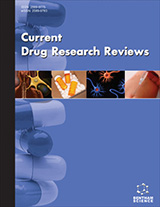
Abstract
Background: Hepatocellular carcinoma (HCC) is a solid cancer with high predominance in males. Liver tissue of both genders has saturable specific oestrogen receptors. Androgen and its receptor (AR) have been suggested to contribute to the predominance in men. Anti-oestrogens, like tamoxifen may reduce the expression of oestrogen receptors, sustaining cellular in HCC. In vitro and human, studies confirmed that both testosterone and dihydrotestosterone (DHT) enhanced the growth and proliferation of hepatic normal and tumour cells. Although the activity of AR is escalated by the chemical induction of hepatocarcinogenesis; clinical trials with AR-targeted agents alone failed to generate survival benefits.
Purpose: This review will outline the possible pathophysiological mechanisms by which both androgen and AR contribute to hepatocarcinogenesis and to which extent this pathway can be responsible for the male prevalence and if they could be pharmacological targets in HCC management.
Conclusion: Influencing factors that seem to be responsible for male prevalence include testosterone, dihydrotestosterone and androgen receptors, as well as, proteomic deficiency of DNA packaging, nuclear proteins and homeostasis-related functional proteins. Understanding the reasons for males, rather than females the HCC prevalence may help in suggesting new approaches by improving the anti-AR therapies through co-targeting of AR and protein kinase B (Akt)/mammalian target of rapamycin (mTOR) pathway.
Graphical Abstract
[http://dx.doi.org/10.1038/nrgastro.2011.131] [PMID: 21808282]
[http://dx.doi.org/10.1159/000506928] [PMID: 32355483]
[http://dx.doi.org/10.1016/S1665-2681(19)31572-8] [PMID: 21502685]
[PMID: 24367230]
[http://dx.doi.org/10.1002/ijc.25516] [PMID: 21351269]
[http://dx.doi.org/10.1177/1755738016653419]
[http://dx.doi.org/10.1128/JVI.01300-08] [PMID: 18768969]
[http://dx.doi.org/10.1126/science.1140485] [PMID: 17615358]
[PMID: 22087137]
[http://dx.doi.org/10.3322/caac.20107] [PMID: 21296855]
[http://dx.doi.org/10.1002/hep.27044] [PMID: 24493250]
[http://dx.doi.org/10.1196/annals.1386.044] [PMID: 17261770]
[http://dx.doi.org/10.1001/archsurg.2011.125] [PMID: 21690443]
[http://dx.doi.org/10.3748/wjg.14.5945] [PMID: 18932272]
[http://dx.doi.org/10.1002/emmm.201101140] [PMID: 22745041]
[http://dx.doi.org/10.1016/j.cld.2010.09.008] [PMID: 21111993]
[http://dx.doi.org/10.1002/ijc.25298] [PMID: 20201099]
[http://dx.doi.org/10.1159/000315247] [PMID: 20616601]
[http://dx.doi.org/10.1016/j.aohep.2022.100695] [PMID: 35257933]
[http://dx.doi.org/10.20517/2394-5079.2018.87] [PMID: 30687780]
[http://dx.doi.org/10.14744/ejmo.2021.19181]
[http://dx.doi.org/10.1084/jem.20181288] [PMID: 30944152]
[http://dx.doi.org/10.1093/jncics/pkaa036] [PMID: 33134821]
[http://dx.doi.org/10.1074/mcp.M116.065474] [PMID: 28512230]
[http://dx.doi.org/10.1016/S0959-8049(97)00317-1] [PMID: 9624234]
[http://dx.doi.org/10.1002/hep.25644] [PMID: 22318717]
[http://dx.doi.org/10.1159/000049782] [PMID: 11684838]
[http://dx.doi.org/10.3390/cancers9050043] [PMID: 28475115]
[http://dx.doi.org/10.1016/j.drudis.2021.02.001] [PMID: 33561464]
[http://dx.doi.org/10.1002/hep.29715] [PMID: 29220539]
























